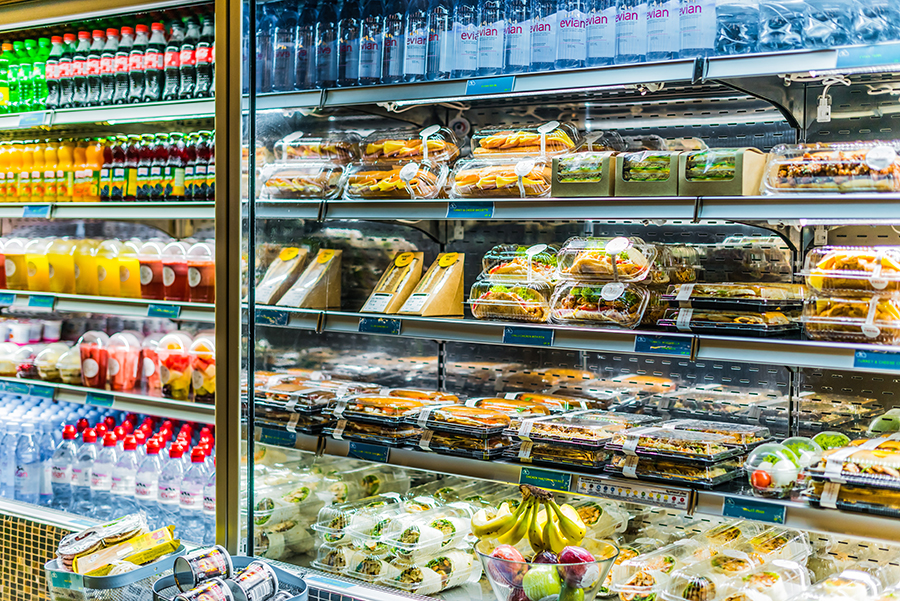Continuing our focus on Extended Producer Responsibility, chief strategy officer at Ecoveritas, Andrew McCaffery, offers some sage advice.
SHIFTING LANDSCAPE
If you change how you look at things, the things you look at change.
Change has been on the cards for some time in the packaging industry, and after all the talk, it’s fast becoming a reality. EPR is altering the landscape, and packaging professionals needto readjust to meet it.
Across the board, businesses are facing unprecedented upheaval, prompting some to make changes in preparation for EPR. However, some smaller companies may not understand what is coming. As a result, the clamour for resource, or more specifically, expertise, is rising.
EPR is about progress, not perfection. It calls for a big-picture perspective on today's environmental and economic challenges and plotting a more hopeful course of action. After all, this hope will pull people along with it.
Rarely are there opportunities to make a real impact and help our planet, but waste represents environmental and economic harm that everyone has the power to affect. Through evidence-based decisions to the make-or-break choices we face now, leaders can engage with tricky issues and create economic and social impact.
With new EPR regulations across Europe, plastic taxes now in force, and deposit return schemes for drinks containers, packaging producers will be expected to bear the full net cost of the packaging they place on the market.
Packaging design and formats, sustainable materials, labelling requirements, recycled content and EPR fees are only some of the high priorities for the businesses on our platform.
THOUGHT PROCESSES
From what we’ve often seen, the level of innovation and pace of change from packaging manufacturers is impressive. Many positive steps have already been taken, but treading lightly on the planet is complex and data-intensive work.
Packaging manufacturers will have put a lot of thought into designing something that will hit EPR requirements, particularly where different players in the chain have different responsibilities. Any further fine-tuning must ensure EPR rewards people for doing the right thing, instead of penalising them.
The current economic pressures are undoubtedly causing disruption, and unsurprisingly, eyes may have been diverted elsewhere. But we have come to understand how this plays out.
CIRCULARITY PERFORMANCE
From the perspective of designers and entrepreneurs, every decision has a consequence. This is why we never examine the sustainability benefits of packaging in isolation, but the broader picture, encompassing the sustainability performance of different packaging designs.
Our goal is for all customers to have a crystal-clear view of the circularity performance of their packaging, informing their decisions about which designs best meet their objectives.
The increasing costs of EPR are estimated to be between 10 and 15 times more expensive for packaging producers. The more time they have to prepare, the better. With lead times to make significant changes in packaging anywhere between one to three years, we urgently need to know the anticipated costs to get the modulated phase in place and enable the desired effect.
To meet the modulation timetable, businesses need to get all the information now to meet all manner of manufacturing demands. They want to see long-term forecasts. And there are concerns about the administrative burden it will cause, too.
A DAILY CHOICE
Essentially, whatever system we went for would have been hugely more expensive than the current way of doing things. But done right, minus the steady stream of criticism, there needn't be a trade-off between doing business responsibly and good financial outcomes.
There are many proactive actions businesses could start looking at now, particularly regarding data. There’s going to be some degree of modulation based on recyclability, so you could examine the full life cycle impact of your packaging, look to minimise its impact, and begin to improve the recyclability of your packaging.
Packaging has already altered so much. The people who deal with waste and take the food out of that packaging are probably unaware of the seismic change. But we mustn’t lose sight of consumers increasingly looking to businesses for a good experience of the green transition.
Every day we make decisions: about the things we buy or the meals we eat, about the investments we make and the time we spend, about our health and that of the planet. Unfortunately, we often choose badly.
But in a business context, EPR will funnel us towards a future where purpose done properly unlocks superior performance.

What is EPR?
The way UK organisations responsible for packaging must carry out their recycling responsibilities has changed. If you’re affected by EPR for packaging, you will need to report your packing data. The regulations apply to all UK organisations that import or supply packaging. You need to collect and report packaging data if all of the following apply:
- You’re an individual business, subsidiary or group (but not a charity)
- You have an annual turnover of £1 million or more
- You were responsible for more than 25 tonnes of packaging in 2022
- You carry out any of the packaging activities.
Packaging definition
Packaging is any material that is used to cover or protect goods that are sold to consumers. It makes handling and delivering goods easier and safer. It also includes anything that’s designed to be filled at the point of sale, such as a coffee cup.
What you may need to do
- Collect and report data on the packaging you supply or import
- Pay a waste management fee
- Pay scheme administrator costs
- Pay a charge to the environmental regulator
- Get packaging waste recycling notes (PRNs) or packaging waste export recycling notes (PERNs) to meet your recycling obligations
- Report information about which nation in the UK packaging is supplied in and which nation in the UK packaging is discarded in – this is called ‘nation data’
What you need to do depends on whether you’re classed as a ‘small’ or ‘large’ organisation. This is based on:
- Annual turnover
- How much packaging you supply or import each year.
When to collect and report your data for 2023
If you have all the required data recorded from 1 January 2023, you should report this. If you do not have all the required data recorded from 1 January, you must report all of your data from 1 March 2023. If you report data that covers a period starting from 1 March, this will be used to calculate a full year’s worth of data.
Large organisations in Wales should comply with this reporting schedule if they have the required data. If they do not have the required data, they should start collecting data from the date the regulations come into force in Wales in mid-2023, and submit it between 1 January 2024 and 1 April 2024.
Small organisations in Wales should comply with this reporting schedule if they have the required data. If they do not have the required data, they should start collecting data from the date the regulations come into force in Wales from mid-2023, and submit it between 1 January 2024 and 1 April 2024.
Source: gov.uk
